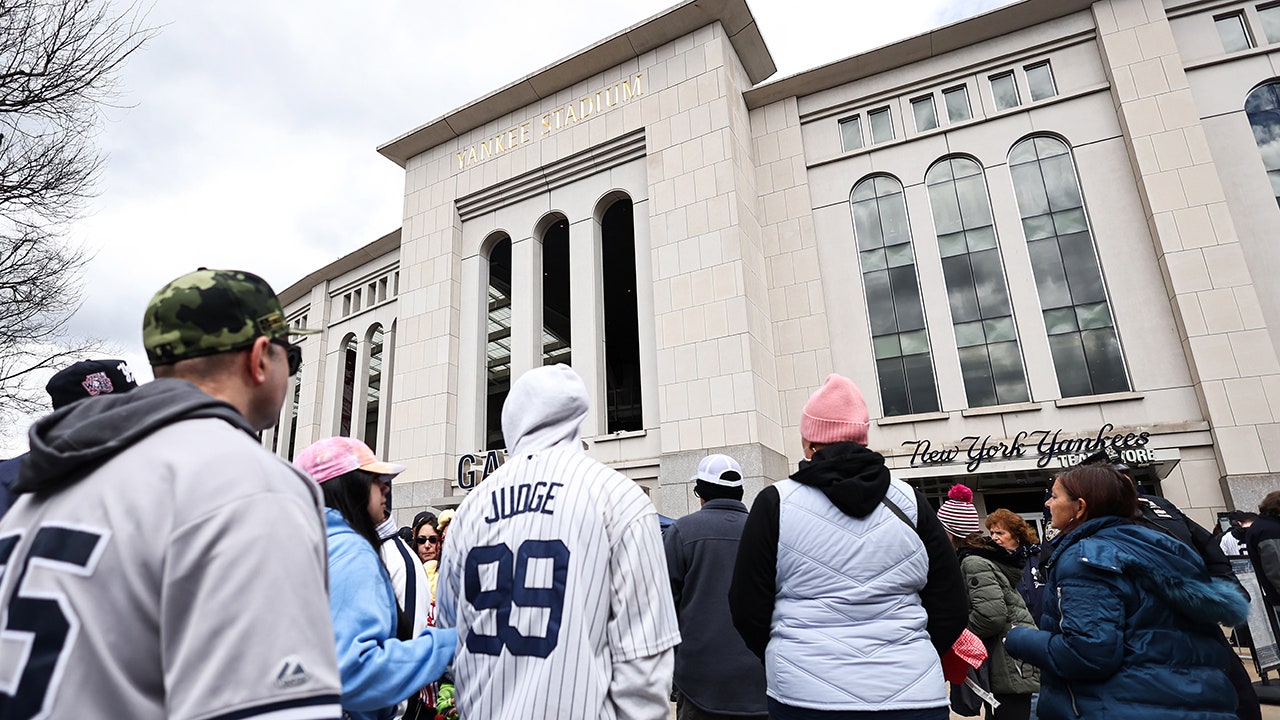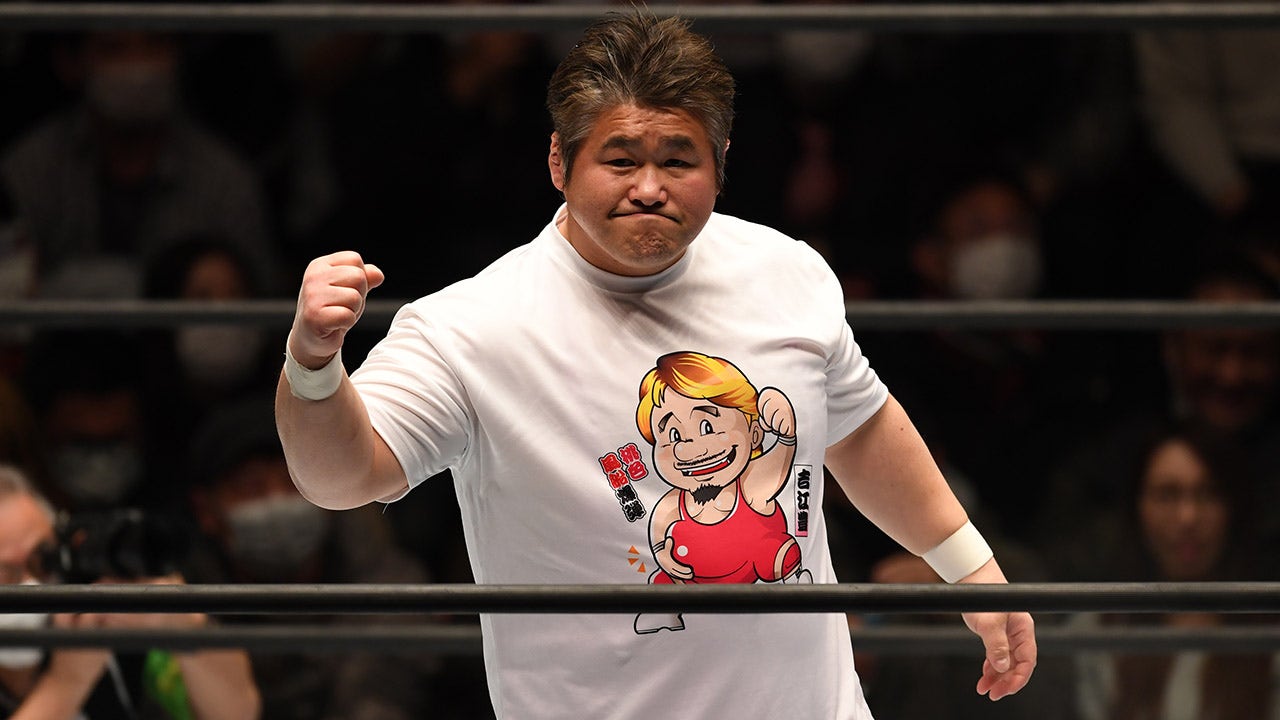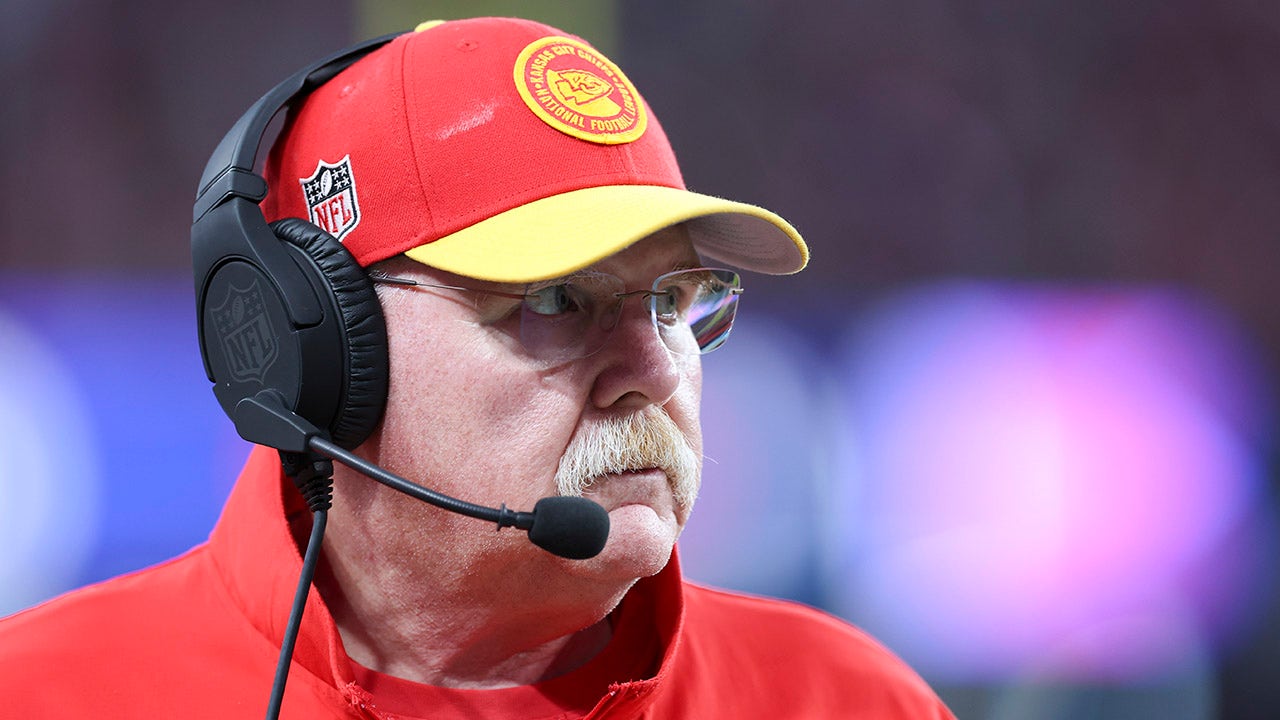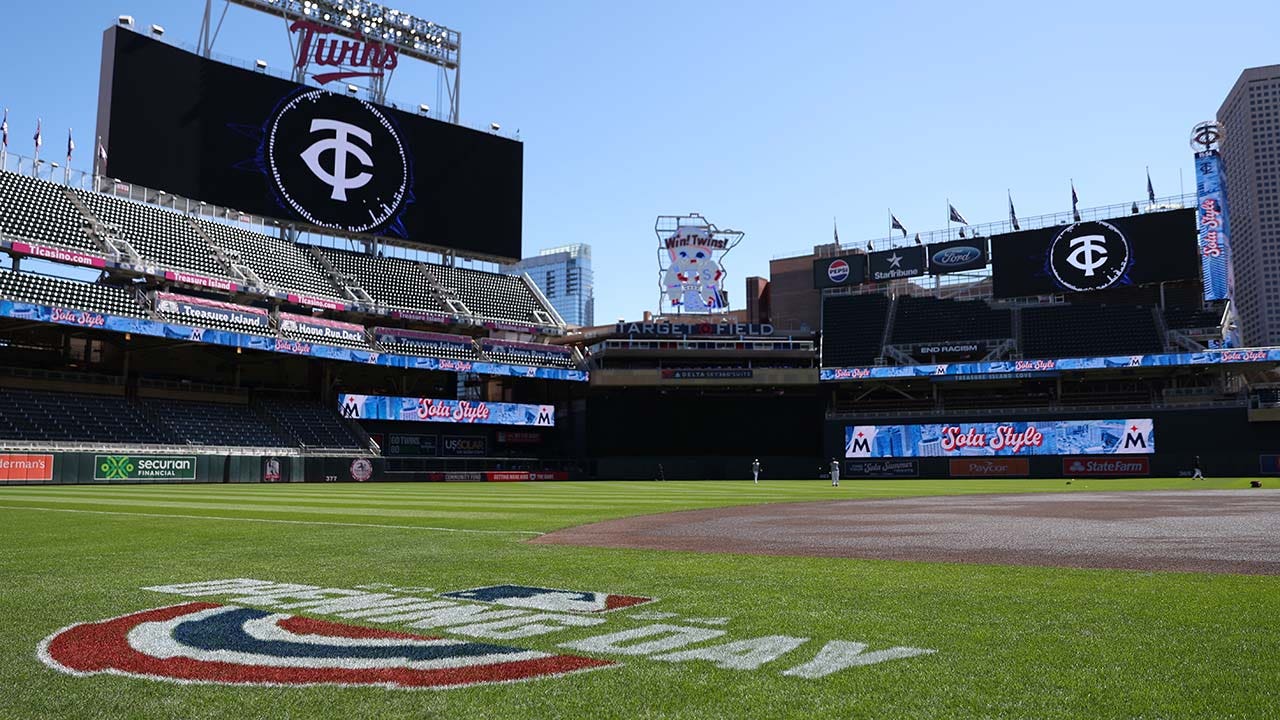The best Latin American starting pitcher in baseball signed out of Venezuela for just $25,000. He never ranked as a Top 100 prospect, he’s never made an All-Star team, and like many of his peers, turned to pitching as a matter of pure practicality.
“The thing is, there are too many position players in Latin America,” Philadelphia Phillies left-hander Ranger Suárez said. “So, I went opposite. A pitcher. It helped me stand out a little bit.”
Suárez, 28, leads the Majors with a 1.70 ERA. After 13 seasons of professional baseball, he has slowly but surely traced an increasingly rare path: one that goes from Latin America to the top of a Major League rotation.
Numbers from the league office show roughly 25 percent of Major League players come from Latin America and the Caribbean, but less than 15 percent of starting pitchers belong to that demographic. The position player leaderboard is loaded with Latin American superstars (20 of the top 50 according to FanGraphs WAR), but only eight of the top 50 starting pitchers in ERA are Latin American.
The imbalance defies surface-level expectations. In the age of Juan Soto, Ronald Acuna Jr., and Elly De La Cruz, baseball lacks an obvious heir to Félix Hernández and Pedro Martinez as the next great Latin American ace. Twelve of the 25 hardest-throwing position players are Latin American, and so are 11 of the 25 hardest-throwing pitchers, so why aren’t more of them starting pitchers?
The top American players tend to both pitch and hit at least through high school, and many emerge as legitimate pitching prospects only after their bodies and skills further develop in college. Justin Verlander, who grew up in Virginia and is now one of the best starting pitchers of his generation, went undrafted out of high school but was the second overall pick after three years at Old Dominion University.
Few Latin American players have an opportunity to follow that path. They often sign as young as 16 years old, and many Latin American big leaguers — even the ones with the strongest arms — tell stories of choosing a position when they were very young, then staying there. As long as they can hit, even the strongest throwers are shunted away from the mound.
Today Kenley Jansen is one of the most accomplished relief pitchers of all time with the fifth-most saves in Major League history, but when Jansen was signed out of Curacao as a 17-year-old in 2004, he was a catcher, and remained so for years despite his electric arm. When he finally moved to the mound in 2009, he was in the big leagues within a year.
“If I were an American kid, I would not be a catcher in the minor leagues,” Jansen said. “Some coach would have already turned me into a pitcher. I would have never hit in professional baseball. They would have recognized the arm.”
Although his career has been wildly successful – four-time All-Star, two-time National League Reliever of the Year – Jansen said he wonders if he might have become a starter had he converted sooner with more time and instruction to develop his secondary pitches. He’s surely not alone. The league’s numbers show that 45.3 percent of Latin American players are pitchers, but a disproportionate number are relievers. Some of that disparity is a financial issue.
Two decades ago, elite Latin American pitchers generated some of the largest signing bonuses on the international market. Hernández, Ervin Santana, Francisco Rodriguez and Francisco Liriano signed for nearly seven figures at a time when such hefty deals were rare. Bonuses of that size have dwindled since Major League Baseball and the MLBPA agreed to cap international amateur spending at $5 million per club in the collective bargaining agreement struck after the 2016 season. The new rules caused teams to become more risk-averse, a calculus that favors hitters.
Executives involved in international scouting, who spoke on the condition of anonymity because they aren’t authorized to discuss the issue, say position players — especially when they’re scouted and signed as teenagers, which most Latin American players are — are seen as far safer bets than pitchers. If a young hitter loses athleticism, he can still advance as a bat-first outfielder or first baseman. If his bat doesn’t develop, he could carve out a role as an elite defender or versatile utility man. There’s little fallback plan for pitchers, and even the most promising young arms can flame out quickly if they get hurt or develop poorly.
“The position players are the ones that are getting the signing bonuses,” said one big league executive with experience scouting in Latin America. “They become pitchers because they didn’t hit enough, or they can’t run enough, or they didn’t move well enough.”

Phillies starter Ranger Suarez leads the majors in ERA, but his path is increasingly rare for players from Latin America. (Orlando Ramirez / USA Today)
In baseball, there’s a popular saying often attributed to players from the Dominican Republic: “You don’t walk your way off the island.” It speaks to a mentality that Latin American players have to hit to be signed. Plate discipline alone won’t do it, and these days — especially for those who want to sign for big money — neither will pitching. We’ll never know, but the best Latin American pitcher today just might be the guy playing shortstop or right field.
“It’s sort of funny,” San Diego Padres right fielder Fernando Tatis said. “In (the Latin American academies) everyone is a shortstop. They just get a couple pitchers to bring in so they can throw to you.”
Cincinnati Reds shortstop Elly De La Cruz, from the Dominican Republic, is 6-foot-5 with one of the strongest arms in baseball, but said he hasn’t pitched since he was very young. Rays center fielder Jose Siri, also from the Dominican and another of the hardest throwers in the game, was more specific: He hasn’t pitched since he was 9. Mets Dominican-born right fielder Starling Marte was once asked to pitch at an amateur tryout but refused.
“I was never interested in that,” Marte said. “I saw other pitchers get hit hard, and I didn’t like that. I remember a couple games where I was in the outfield and I saw guys get hit, and I said, ‘Damn, I don’t want to go through that.’”
Why would he? This January, more than 35 international amateurs received signing bonuses of at least $1 million, but none were pitchers. The big money went to hitters, while even the most highly touted arms settled for six or even five figures.
“Teams are afraid to invest money on pitching, because of the injuries, the risk factor,” one executive said. “You end up signing a lot of good, decent arms. But most of them are throwers or relievers, guys that throw hard.”
This thinking extends to the domestic amateur draft, where only three high school pitchers have ever been selected first overall, and two of them never reached the majors.
On the international market these days, teams tend to splurge on a few promising hitters while spreading smaller bonuses to a handful of young pitchers in hopes that one or two will eventually emerge.
The handlers, known as buscones, who train and promote amateur Latin American players – and also receive a cut of their signing bonuses – recognize this spending disparity and, according to several executives and players with knowledge of the international market, sometimes push elite Latin American players away from the mound. A player like Verlander, had he been born in the Dominican Republic, might have been showcased as a center fielder with the size to hit for power and the arm strength to handle right field. He might never have been guided to the mound.
“They try to train position players so they can get more money,” Cincinnati Reds Dominican-born starter Frankie Montas said. “If you can hit, they’re going to want you to stick with hitting as long as you can.”
Red Sox right fielder Wilyer Abreu, who has another of the strongest throwing arms of any position player in the majors, said he was initially scouted in his native Venezuela as a two-way player, and for a while he thought he might sign as one, but around the time he turned 16 and the scouting intensified, the various people running showcases and workouts told him to stop wasting time on the mound.
“With time, the scouts just told me they didn’t want to see me any more as a pitcher,” Abreu said. “Just focus on being a position player, and that’s when everything changed.”
Abreu was the age of an American high school sophomore, throwing left-handed, with a fastball that some scouts already clocked at 90 mph. Yet there was little interest in seeing how far he could go on the mound. Abreu is now 24 years old and said he can’t remember which offspeed pitches he threw because it’s been so long since he even tried.
Had Abreu stayed on the mound, his opportunity to develop his secondary pitches might have been limited outside of America. The developmental infrastructure — both in facilities and personnel — simply isn’t the same. Driveline, which stands at the leading edge of American pitching development, has a minimal presence in Latin America, and few Latin American players end up pitching for elite college programs that have state-of-the-art facilities and technology for pitching development.
“You’re asking a 15, 16-year-old kid to be at the same level, in a different country, as an American guy who has been to college (and) learned so much,” Mariners star center fielder Julio Rodriguez said. “It’s different. It’s definitely different.”
The imbalance can create even greater disparity.
“It’s also part of the culture,” said retired slugger Nelson Cruz, who served as the general manager for the Dominican Republic in the 2023 World Baseball Classic. “When you grow up, you want to [play] shortstop or center field. That’s the beauty of hitting home runs and playing defense and all that. A lot of it is having someone to look up to in the big leagues.”
Mexico counts former Los Angeles Dodgers ace Fernando Valenzuela among its most iconic baseball players, and since 2000, nearly 65 percent of the Mexican major leaguers have been pitchers. In Puerto Rico, though, right fielder Roberto Clemente is a national hero and there’s a proud tradition of catchers (Ivan Rodriguez, Jorge Posada, the Molina brothers) and middle infielders (Roberto Alomar, Francisco Lindor, Carlos Correa), but Puerto Rican pitchers are far less iconic. Puerto Rican players are draft-eligible and thus unaffected by the rules and quirks of international free agency, yet since 2000, 73 percent of Puerto Rican-born players (107 of 146) have been position players. Jansen said he sees the same thing in his native Curacao, where kids once dreamed of following the footsteps of center fielder Andruw Jones and now want to be the next Andrelton Simmons or Ozzie Albies in the middle infield.
“I think everybody in Curacao now wants to be a shortstop or a second baseman,” Jansen said. “Nobody wants to pitch, and we have so much great arm talent.”
There is considerable value, though, for teams that successfully tap into that talent pool.
In recent years, the Houston Astros have leaned on a slew of low-cost Latin American starters — Framber Valdez, Cristian Javier, José Urquidy, Luis Garcia and Ronel Blanco — to keep their rotation competitive amid a streak of seven straight American League Championship Series appearances. The Phillies (Suárez), Atlanta Braves (Reynaldo López) and Chicago Cubs (Javier Assad) have benefited from strong seasons from Latin American starters this season.
Those are outliers, though. Since 2015, only one Latin American pitcher has won an ERA title and only two rank in the top 25 in starting pitcher WAR. The Astros, New York Mets and Miami Marlins are the only teams to have used as many as three Latin American starters this season; the vast majority of teams have used one or zero. The entire National League West has used only three Latin American starters this season, and two of those were one-game-only spot starters.
Even those who have thrived on the mound might secretly wish they still had a chance to hit.
“I liked (pitching),” said Mets starter Luis Severino, who converted from the outfield as a 15-year-old. “I liked the adrenaline, the competition.
“But if I had to choose, I would definitely be a position player.”
The Athletic’s Matt Gelb, Britt Ghiroli and Trent Rosecrans contributed to this story
(Top image: Daniel Goldfarb / The Athletic; Photos: Ron Vesely / MLB Photos via Getty Images; Matt Thomas / San Diego Padres via Getty Images; Rich Storry / Getty Images)






